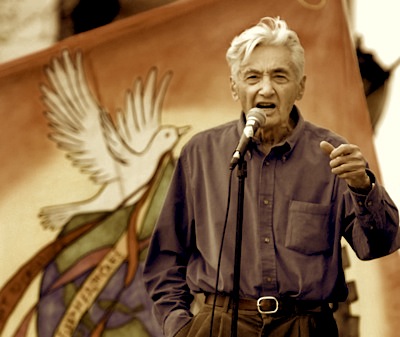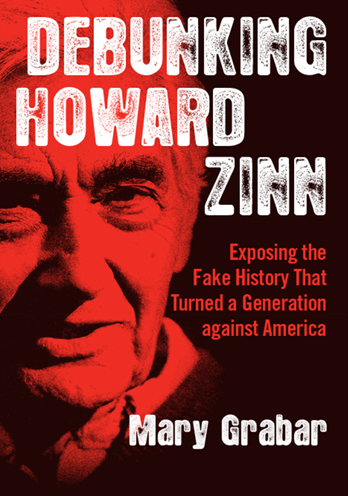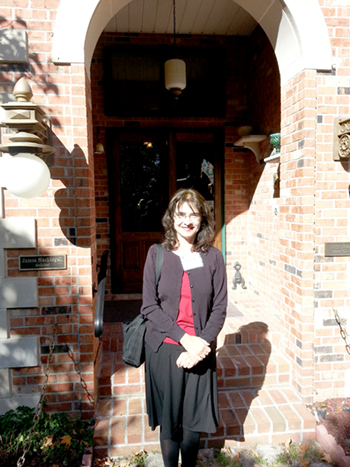 By Zachary P. Wilson, Class of 2020, Grove City College; Posted September 23, 2019:
By Zachary P. Wilson, Class of 2020, Grove City College; Posted September 23, 2019:
America is evil. The United States has been founded on genocide, slavery, oppression, and imperialism. President Ronald Reagan stated that the Soviet Union was the Evil Empire and now that it has collapsed, the new Evil Empire is the United States of America. These are the words of “historians” at schools and universities around the United States today; they make these claims from what history tells us. This is the reason I became a historian.
This revelation came to me while talking with a friend in junior high, and somehow the conversation of Native Americans and their role in American society came up (like what normal thirteen-year-old boys talk about in their spare time). I was surprised when he told me that America obtained our land by committing mass murder against the Indians, more specifically selling them smallpox-infected blankets in order to weaken them. I immediately thought to myself, “I don’t remember hearing that in my history classes,” but something also told me that this just did not sound right. I had to learn the truth. It was shortly after this event that I came across one of the figures I will never forget: Howard Zinn.
Allow me to shed some light on this dark figure. Howard Zinn (1922-2010) was a professor of political science at Boston University, the author of the infamous A People’s History of the United States, and a social activist. In his book, Zinn discusses relations with Native Americans and the Europeans since Columbus arrived in the New World. Columbus, after discovering the Americas, began massacring the natives, establishing a European tradition when dealing with the tribes. The diseases that Columbus brought with him spread across the western hemisphere and devastated the Native American populations. By the French and Indian War, American colonists at Fort Pitt took advantage of the fact the Native Americans were their enemy and used smallpox infected blankets to wipe out the natives and take their land, implementing an early form of biological warfare.
Biological warfare?
So, America used biological warfare against Indians apparently, a college professor just explained; as a young teenager what other evidence could you need? Professors are supposed to teach you the facts and tell you what really happened; it’s not like they have any secret motives or anything to tell their students something wrong; they’re angels with chalkboards. The facts still did not seem to add up, as Zinn seemed to leave out information in the narrative. So let us look at the accounts before looking at the author himself.
To understand anything involving diseases you need to first understand when people started to realize that it is probably not a great idea to go around sneezing on everyone. Louis Pasteur was the founder of what is called germ theory in the mid-1800s, explaining how disease spreads and that different microorganisms cause different diseases. Until this point disease was said to spread due to miasma, or bad air, that affected people and caused them to become sick. By the late 19th century, germ theory had replaced the miasma theory in the academic community. Common sense can dictate that until this groundbreaking theory was established people did not accurately understand how diseases spread, making it difficult to use germs as a weapon.
What does P.S. mean?
As for the stories of the smallpox blankets, these accounts are few in number. During Pontiac’s Rebellion on June 22, 1763, Native Americans sieged English occupied Fort Pitt, calling for Field Marshal Lord Jeffery Amherst, an Englishman, to order Colonel Henry Bouquet to relieve the fort. Bouquet wrote to Amherst on July 13, saying,
P.S. I will try to inoculate the Indians by means of blankets that may fall in their hands taking care however not to get the disease myself. As it is a pity to pose good men against them, I wish we could make use of the Spaniard’s method, and hunt them with English dogs. Supported by rangers and some light horse, who would I think effectively extirpate or remove that vermine. H.B.
Amherst replied,
P.S. You will do well to try to inoculate the Indians by means of blankets, as well as to try every other method that can serve to extirpate this execrable race. I should be very glad your scheme for hunting them down by dogs could take effect, but England is at too great a distance to think of that at present.
Amherst was infamous for his hatred of Native Americans, as could be seen in numerous letters he wrote. If one were to take this at face value, one could probably imagine Amherst going on midnight rides dropping off smallpox blankets to Indian tribes like a demonic Santa Clause. The problem with this is that these primary sources (like most primary sources) do not tell the whole story. In fact, there is no report that the English ever implemented such a tactic of willingly giving smallpox blankets to attack the natives. The policy was never adopted officially, and if Amherst or Bouquet had wanted for this to become official, it would have been in their best interest to place it in the main body of what were very lengthy, detailed letters and not save it for brief postscripts.
There is only one recorded instance in which Native Americans were ever given blankets, and independent actors caused the event. In late June, before the letters between Amherst and Bouquet were written, two traders at Fort Pitt gave two blankets and a handkerchief from the fort’s quarantined hospital to two Delaware Indians visiting the area. One reportedly said, “I hope it will have the desired effect,” but there is no evidence that whatever the blankets were infected with caused disease to break out among the attacking Indians, or even if the traders possessed malicious intent. Colonel Bouquet was the one who relieved Fort Pitt from the natives on August 20, with 500 troops and not disease (unless the smallpox blankets became sentient and disguised themselves as soldiers). There were outbreaks of smallpox in many tribes in North America, but these occurred both before and after the events at Fort Pitt, showing that smallpox was a problem among the Indian tribes, but as far as history shows, it has no connection to smallpox blankets.
Zinn: Don't let facts get in the way.
So, let us look back to what Zinn said about American and Indian relations. First and foremost Zinn is getting his basic facts mixed up in generalization, which in my opinion is good in certain events, but when you are going to point a finger at someone you better be accurate about it. The first generalization is that Columbus intentionally spread the disease amongst the natives he met in 1492 but again, basic germ theory was not established for another 350 years. Zinn’s second generalization involves lumping Americans into a crime that some Englishmen speculated about but never actually committed. Through Zinn’s eyes, the United States is complicit in conspiring against Native Americans using smallpox blankets even though the country did not exist yet, two Englishmen concocted it, and the crime was never seen as an official strategy by anyone. It is clear that Zinn was trying to push a political agenda.
So why is America evil? If you were to ask me, it is not any more evil than other western countries. America I believe is a good country stained with sin. I don’t believe that America’s hands are clean in their relations with Native Americans (the Fort Laramie treaty for example), but the United States government was not, and never has been, hell-bent on massacring every last “redskin” they came in contact with on the continent (except maybe in the NFL). “Historians,” like Zinn, seem to focus on these negatives explicitly as a means of digging up the past to show off the dead, racist, sexist, homophobic, xenophobic (and every other “ism” or phobia you can think of) corpse of the American past even if it doesn’t exist. An anti-American activist in his academic and public life, Zinn vehemently denounced America and what it stands for. I have come across others over the years, and they continue to repeat the narratives addressed by Zinn (arguably this could be because their professors make Zinn’s book mandatory reading). Why people buy into these lies, I wish I knew. Perhaps it’s ideological bias, historical bias, or academic bias; whatever it is, there is one thing I can possibly agree with: the more someone repeats a lie the greater the likelihood people will take it as truth. That lie is that America is evil.






